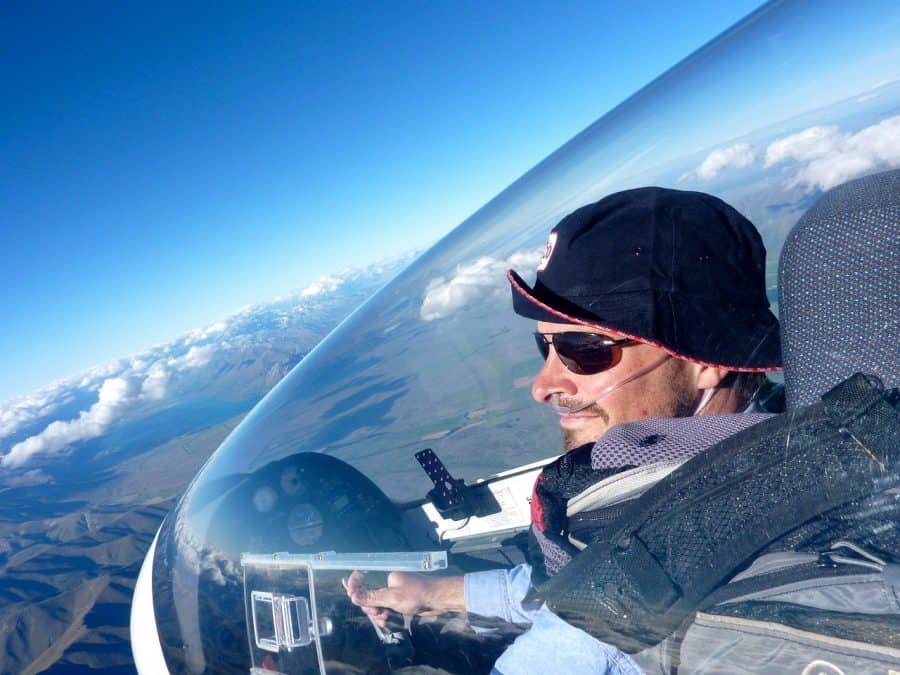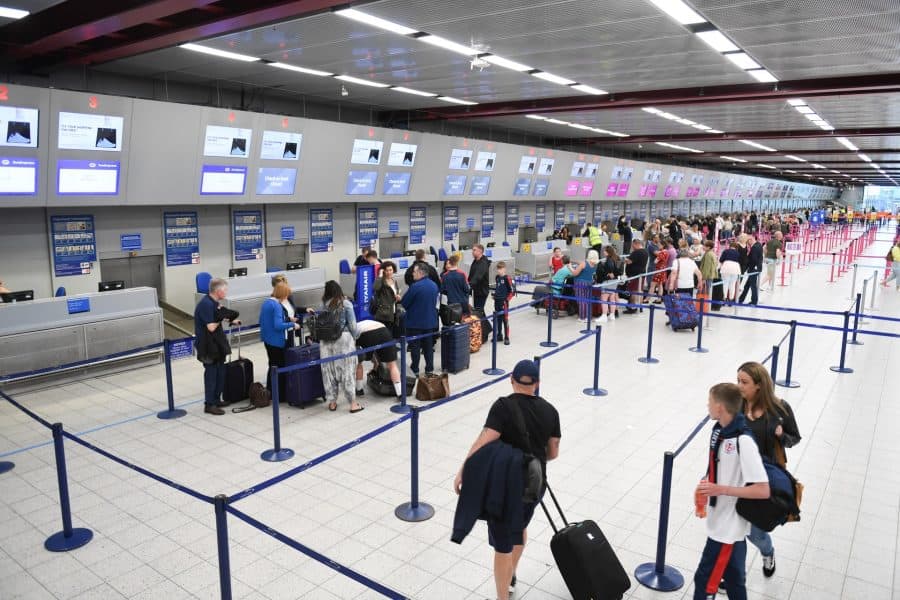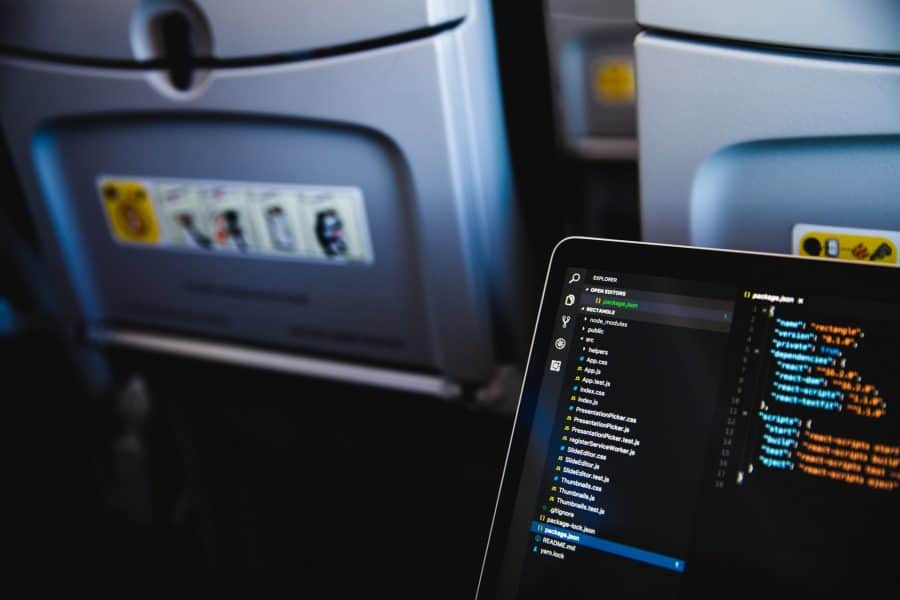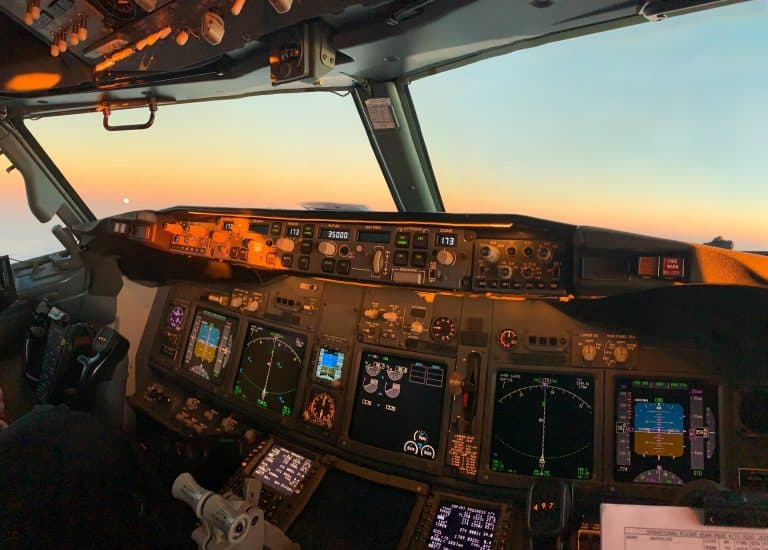Why Do Pilots Always Wear Sunglasses?
Pilots and sunglasses seemingly go together like airplanes and wings. Whether you see them during the walk around or in cockpits, in pictures or videos, at the airport or just on the way to work – if you see a pilot, the sunglasses are always close by. But why are pilots almost never seen without their sunglasses? Are they just trying to look fashionable or is there more to it?
First of all, pilots are not required to wear sunglasses by law, but it does help in certain situations. Sunglasses may be mirrored and prescription and come in any shape and form that matches the uniform, but polarized glasses are not recommended. As it is with most things, sunglasses for pilots are a matter of personal preference.
Are pilots required to wear sunglasses?
Although there are currently no regulations that dictate sunglasses in the cockpit, in some situations it is simply more comfortable to wear them. Additionally, they even serve as protection for the eyes in certain situations.
When climbing to cruising altitude, planes normally leave the clouds behind and fly in sunshine. Clouds are made up of small water droplets or ice pellets that reflect sunlight. It is the same effect that the sun has on snow, where it becomes much brighter and blinding, which can be very uncomfortable. Sunglasses are the easiest way to combat this and help pilots to avoid distractions.
The same goes for aprons where planes are parked. Airports have huge areas with concrete that go on for miles. On sunny days, these massive areas also reflect the sunlight and can be blinding. So if you see your pilot during the walkaround with his aviators, it is not necessarily just because he or she wants to look cool, but to avoid the glare and have a clear view.
As we all know, planes fly all the time, day and night. That also includes sunrise and sunset. Just like driving into the sun, pilots flying an airplane face similar challenges. Pilots need to be able to see things outside the cockpit, such as the runway, mountains and planes, but at the same time also need to be able to see the instruments inside.
So we can see that it is not only for style, but also for comfort and protection. That also includes the filtering of UV light, which we’ll get into further below.
Do all pilots have aviators?
The simple answer is: no. However, there are a lot of advantages to them, which is why it seems that most pilots indeed do have them.
First of all, aviators are very light. So, even on long working days you can wear them all day without irritating your ears or nose. The thin frames also allow little to no interference with the headsets that have to be worn while flying. The earpieces can press on bigger and thicker frames, making them uncomfortable and even cause distractions, which pilots try to avoid. Because more modern headsets do allow for any shape of glasses to be worn, you might see a change in the future.

The other advantage is the big viewing area. With the glasses themselves being fairly big, the frame is never in your visual field while wearing them. Thus, there is nothing obstructing your view, when you wear aviators. The large glasses also reduce the glare and light that might get behind the glasses from the sides, which is especially useful when you cruise on top of the clouds.
Why should pilots avoid polarized glasses?
Even though polarized glasses have great applications for outdoor activities, flying is not one of them. The reason behind it is very simple: With polarized glasses you cannot see LCD screens properly. In modern airplanes, all of the instruments are on LCD screens. So if you wear these glasses, you might not be able to see vital information such as the speed or how much fuel is left.
This is due to the fact that the polarization filters out so-called horizontal light waves. These light waves occur when light is reflected by a water surface. For example, when you look onto a lake in the sun without sunglasses, you can only see the reflection of the sky. However with polarized glasses you do not see the reflection anymore, but you can see the fish in the water. Therefore, a pilot wearing such glasses cannot see the ?reflection of the sky? anymore, which in their case would be the vital information of the instruments.
If you want to try it yourself, just put on a polarized pair and look at your phone. By turning and looking at it from different angles, you will notice that you are unable to see anything on the screen.
What is the best tint for flying?
The FAA (Federal Aviation Authority) provides a good guide of what to wear and what not to wear.
In their guide, you can find that the best tints are gray, gray-green and brown, but they recommend pilots to use gray tint ones. These shades keep colors consistent and do not filter anything out. They advise against using yellow, amber or orange tints as they filter out or distort certain colors, specifically blue. That can become problematic in interpreting the primary flight display, which shows the horizon and is one of the most important instruments in the cockpit. On this display you have to be able to distinguish between blue (sky) and brown (ground) to know what the airplane’s attitude is without outside reference. An example of no outside reference is when you fly in clouds.
The guide also mentions that most coatings on glasses are acceptable, especially those that protect the lenses from scratching, but also anti-fog, anti-reflecting and mirrored.
One thing that is important to remember is that 100% of UV light should be filtered out. Flying at 36.000ft and in thinner air means that the natural protection from the atmosphere against UV light is weaker compared to being on the ground. So it is vital that pilots protect their eyes.

As you can see you need to consider many different aspects when choosing the right pair of sunglasses.
Can pilots wear prescription sunglasses?
?Pilots must have perfect vision.? This statement is one of the many myths out there and not true. Of course, there are certain laws that vary from country to country. For example, in EASA (European) countries pilots with more flight experience can have higher limits than student pilots in their first medical examination.
As we have learned, sunglasses are an important tool for pilots and therefore, if you need prescription glasses, the best thing to do is to combine the two. This is what I am actually doing myself when flying.
When talking about glasses and pilots, it is worth noting that if your medical license states that you must wear glasses while flying, then you have to have your normal pair and a backup. Sunglasses are not considered a backup, even if they are with corrective lenses. So any pilot that uses glasses to fly, usually needs three pairs: the normal ones, the backup and of course the sunglasses.
Pilots that do need glasses, but wear sunglasses only in non-critical parts of flying (that is usually cruise or while stationary), can use normal ones. If you want to use them for take off and landing, they must be prescription glasses.
Special protections for the eyes – Laser attacks
As we know, there are people opposed to airports and planes. There are currently increasing threats to pilots and aviation in general caused by laser attacks from the ground to airplanes that are just about to land. But what does that actually mean?
A laser attack is when a person on the ground uses a strong laser, like a high end laser pointer, to shine it onto the cockpit of an airplane. This is usually done at night and can severely blind the pilot. Not only is that a big distraction when you need to focus on landing the plane, but it can also temporarily impair the vision.
There are procedures in place by every airline that tell you what to do during such an attack. One of the points is to put on sunglasses or use the sun blinds, so you will not get blinded by the laser.
It might seem strange to land the plane with sunglasses on at night, but runway lights are usually bright enough to do so safely or the tower can increase their brightness on request. If only one pilot gets blinded, then the other one will simply take over and land.
In general, sunglasses are a very useful tool in a pilot’s life and not only there to look cool. Although this is a very welcome side effect. There are some rules and recommendations, but it is up to each individual if and when to wear them. You can choose whether you want to wear them or not as long as you can achieve the main goal in aviation: safety. However, sunglasses definitely make safety more stylish.
More from AirportNerd
The Complete Guide to Airplane Window Shade Etiquette
Picture this. You are sitting in the most undesired seat on the airplane, the middle…
Why Do Airlines and Airports Use 24-Hour Time?
The culprit of many missed flight connections: distinguishing between 12-hour and 24-hour clocks. While most…
Why Are Airports Named After U.S. presidents?
Donald Trump has been in the news for wanting to rename Palm Beach International Airport…
Why Do Laptops Get Special Attention at Airport Security?
?Shoes off, laptops out, liquids in zip lock bags, all in separate trays!? Frequent flyers…







